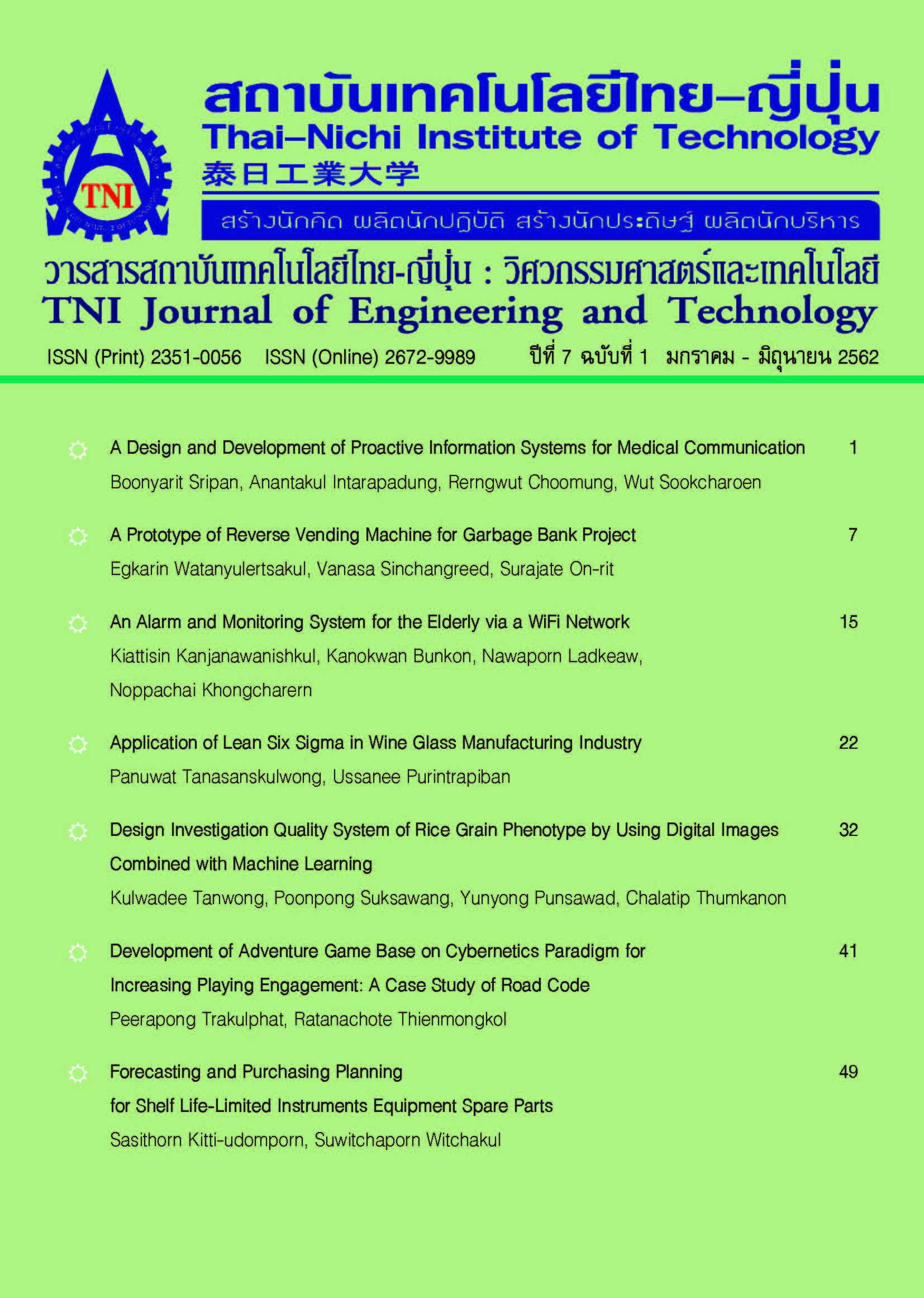Improving the Performance of an Image Classification with Convolutional Neural Network Model by Using Image Augmentations Technique
Main Article Content
Abstract
Image classification is one of the challenges for both humans and computers because it is a critical task. Researchers try to solve this task in many ways. In neural networks, Convolutional Neural Network (CNN) has been widely used for images recognition, images classifications, and objects detections. The process of CNN model includes training and testing. This paper aims to improve the performance of an image classification with Convolutional Neural Network model by using image augmentation technique and compare the accuracy of each technique. The dataset that we used in this paper was collected from Canadian Institute for Advanced Research (CIFAR-10) dataset which consists of a total of 60,000 images. The color images are of size 32x32 in 10 different classes. In the first stage, the 10- fold cross validation method is used to divide 50,000 images for training 300 rounds and 10,000 images for testing. In the second stage, in order to create artificial images, 10,000 images were randomly-selected from all categories and applied the image augmentation technique such as color adjustment, rotation, zoom, or flip image to the image. This image augmentations technique were randomly selected only one technique and applied to one image. The training images were 60,000 images in total; 50,000 images from the first stage plus 10,000 new images. Then the computer trained the images for 300 rounds. The evaluation shows that after using image augmentations technique by creating artificial images, the accuracy of Convolutional Neural Network model performs better from 84.79% up to 87.57%
Article Details
Article Accepting Policy
The editorial board of Thai-Nichi Institute of Technology is pleased to receive articles from lecturers and experts in the fields of engineering and technology written in Thai or English. The academic work submitted for publication must not be published in any other publication before and must not be under consideration of other journal submissions. Therefore, those interested in participating in the dissemination of work and knowledge can submit their article to the editorial board for further submission to the screening committee to consider publishing in the journal. The articles that can be published include solely research articles. Interested persons can prepare their articles by reviewing recommendations for article authors.
Copyright infringement is solely the responsibility of the author(s) of the article. Articles that have been published must be screened and reviewed for quality from qualified experts approved by the editorial board.
The text that appears within each article published in this research journal is a personal opinion of each author, nothing related to Thai-Nichi Institute of Technology, and other faculty members in the institution in any way. Responsibilities and accuracy for the content of each article are owned by each author. If there is any mistake, each author will be responsible for his/her own article(s).
The editorial board reserves the right not to bring any content, views or comments of articles in the Journal of Thai-Nichi Institute of Technology to publish before receiving permission from the authorized author(s) in writing. The published work is the copyright of the Journal of Thai-Nichi Institute of Technology.
References
N. Dalal, and B. Triggs, “HISTOGRAMS OF ORIENTED GRADIENTS FOR HUMAN DETECTION,” IEEE Computer Society Conference On Computer Vision And Pattern Recognition, vol. 1, pp. 886–893, 2005.
M. A. Tanner, and W. H. Wong, “The Calculation of Posterior Distributions By Data Augmentation,” Journal Of The American Statistical Association, vol. 82 NO. 398, pp.528–540, 1987.
G. E. Hinton, S. Osindero, and Y.W. Teh, “A FAST LEARNING ALGORITHM FOR DEEP BELIEF NETS,” NEURAL COMPUTATION, vol.18, no.7, pp.1527 –1554, 2006.
Z. Zafrulla, H. Brashear, n T. Starner, H. Hamilton, and P. Presti, “American Sign Language Recognition With the Kinect,” ICMI '11 Proceedings of the 13th international conference on multimodal interfaces, pp. 279-286, 2011.
T. Siriborvornratanakul, “Five questions with Deep Learning: Automatic cucumber sorting system from pictures @Cucumber Farm in Japan (Part 2/2).”[Online]. Available: https://mgronline.com/daily/detail/9590000091327 [Accessed: 20-Dec-2018].
Z. Hussain, F. Gimenez, D. Yi and D. Rubin. “Differential Data Augmentation Techniques for Medical Imaging Classification Tasks,” AMIA Annual Symposium Proceedings Archive, pp. 979-984, 2018.
C. Niyomthum, “What is CNN?.” [Online]. Available: https://medium.com/@thebear19/neural-network-101-cnn-with-tensorflow-fd5d515e979b. [Accessed: 04-Oct-2018].
Mc. Ai, “Let's see how CNN Thinks!!!.” [Online]. Available: https://mc.ai/มาลองดูวิธีการคิดของ-cnn-ก/. [Accessed: 10-Nov-2018].
M. D. Bloice, C. Stocker, and A. Holzinger, “Augmentor: An Image Augmentation Library for Machine Learning,” The Journal of Open Source Software, vol.2. pp. 1-5, 2017.
C. Shorten, “Image Augmentation Examples in Python.” [Online]. Available: https://towardsdatascience.com/image-augmentation-examples-in-python-d552c26f2873. [Accessed: 10-Nov-2018].
P. Bee, “How to install Keras + Tensorflow (GPU version) on windows 10.” [Online]. Available: https://medium.com/boobeejung/วิธีการติดตั้ง-keras-tensorflow-gpu-version-บน-windows-10-บทความนี้เขียนขึ้นเพื่อหลายๆ-คนที่กำ-e8e3f5105baa. [Accessed: 04-Oct-2018].
K. Jarrett, K. Kavukcuoglu, M. Ranzato and Y. LeCun, “What Is The Best Multi-Stage Architecture for Object Recognition?,” in 2009 IEEE 12th International Conference On Computer Vision, pp. 2146–2153, 2009.


